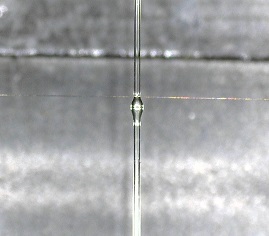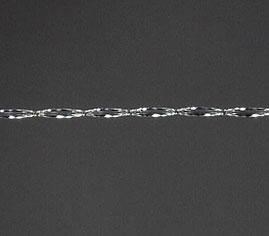Beginner’s Guide For Designing Fiber Optic Sensors
Fiber optic sensors have been found useful in many applications. This technology has distinct advantages over other competing technologies, which include small size, immunity to electromagnetic interference, electrical insulator, multiplexibility and long-distance transmission capability. Fiber optic can be flexibly designed for operation in any specified sensing application.


Here are the important structured steps to start up a design work of your own fiber optic sensor.
1. Identify the parameters to measure.
It is obvious that you need to know what are the parameters that you want to measure. This can be either physicals or chemical. For example, is it temperature, pressure, vibration, refractive index, pH, etc? This stage is important in order to decide the suitable sensing mechanism at the next stage.
2. Identify appropriate fundamental sensing principle.
There are various sensing principles for fiber optic sensor to choose from, which include interference, loss, or scattering. The detectable changes to these effects by the measurand are due to the perturbed light signal or the fiber optic properties, either directly or indirectly. If the light signal or fiber optic cannot be affected directly by the measurand, an intermediate transducing medium can be exploited to pick up the measurand and translate the change. The intermediate transducing medium will be changed in response to the measurand, and this change will, in turn, affect the light signal or the fiber optic properties.
3. Identify the measurement specifications.
Now, the requirements for the measurement need to be considered, such as accuracy and resolution, since the chosen sensing mechanism must be able to provide meaningful and reliable reading. If the measurement involves multi-points, multiplexible fiber optic sensors are necessary to enable uncluttered array design. Additionally, distributed fiber optic sensor can be considered if spatially continuous measurement is required.
4. Consider practicality of fabrication, installation and operation.
Finally, it is always attractive if the developed fiber optic sensor is simple in various aspects, as well as it can be practically and durably operated at the intended site. Of course, it always come down to the budget and return-on-investment. Nevertheless, if it is too complicated or costly, it can still outshine the competing technologies if it can provide far superior performance improvement, such as in terms of accuracy, reliability, etc.
I hope this guide could help you in your early stage endeavour on fiber optic sensor project. If you are interested to know more information, to have a discussion, or to get advice on this topic, you are most welcome to contact and visit us at the Digital Connectivity Research Institute, Multimedia University.

Dr. Mohd Ridzuan Mokhtar is an alumnus of King’s College London, U.K., and the University of Southampton, U.K. He was also a Research Fellow at City University London, U.K. He was previously appointed as the Director of Collaboration and Innovation Centre at Multimedia University, Malaysia. He is currently a full Professor at the Faculty of Engineering, Multimedia University, and the Director of Research Institute for Digital Connectivity at Multimedia University, Malaysia, who oversees interdisciplinary innovations for enhanced connectivity experience. He is a member of the Institution of Engineering and Technology (IET), U.K. and a Chartered Engineer registered with the Engineering Council (EC) U.K. His research passion includes fundamental and applied research of fiber optic sensors and optical communication systems.

